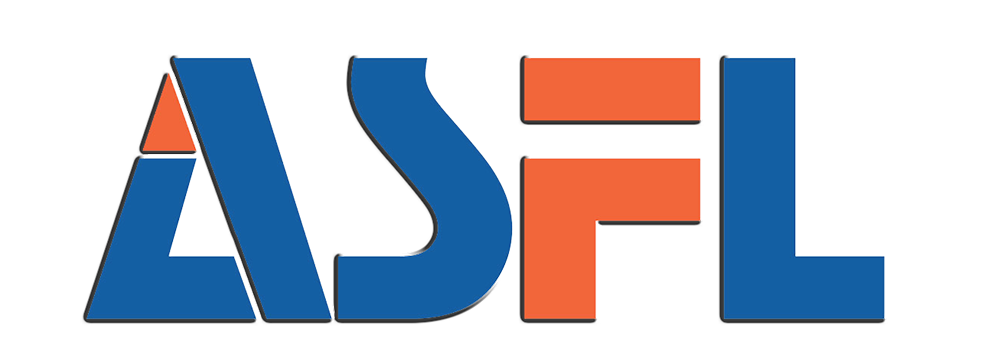Identifying Leakage in Filling and Capping Machines
Worn Seals and Gaskets
Seals and gaskets are critical components in filling and capping machines, as they are essential for preventing leaks and ensuring efficient operation. Studies highlight that worn seals and gaskets account for a significant percentage of leaks, with numbers suggesting they are responsible for approximately 70% of all leakage issues in liquid filling machines. Over time, the materials used in seals and gaskets can degrade due to constant exposure to chemicals, temperature changes, and mechanical wear. Indicators that seals and gaskets need replacement include visible cracking, discoloration, or a decrease in sealing performance. Routine inspections and timely replacements are necessary to maintain efficiency and prevent costly downtime. Regular use of high-quality materials and correct installation can further extend their lifespan, reducing the risk of leaks.
Loose Pipe Connections
Pipe connections within filling machines are prone to becoming loose due to vibrations and pressure fluctuations during operations, leading to potential leaks. Statistics indicate that this issue affects approximately 30% of liquid filling machines, causing unnecessary waste and potential contamination. Identifying and tightening loose connections is a straightforward process. Begin by examining the pipes for visible movement while the machine is operating. Use the appropriate wrenches and tools to tighten any loose connections carefully. It is crucial to follow safety procedures, such as turning off the machine and depressurizing the system before adjustments. Applying thread sealant can further reduce the chances of future leaks, ensuring a more reliable operation.
Cracked Tubing in Liquid Bottle Systems
Cracked tubing in liquid bottle filling machines can lead to significant issues, including leaks and compromised product quality. Signs of cracked tubing include visible wear, discoloration, and leaks at connection points. Ignoring these signs can result in increased production costs and potential damage to the equipment. Maintenance tips include regular inspections of the tubing for any signs of wear and replacing affected sections immediately. Employing high-quality, chemically resistant tubing materials can prevent cracking. The costs associated with resolving tubing issues are minor compared to the potential financial impact of leakage, making proactive maintenance a cost-effective strategy.
Adjusting CO2 Pressure for Carbonated Drinks
Proper CO2 pressure is essential in maintaining the carbonation levels of carbonated beverages, and observing industry standards is vital. To preserve the fizz and flavor of soft drinks, CO2 pressure needs to be optimally set. According to industry guidelines, the pounds per square inch (PSI) will be recommended based on the beverage type and manufacturer standards. It's important to consistently monitor and adjust these settings to avert flatness or over-fizziness by executing a precise adjustment of CO2 pressure settings regularly. Operators should refer to their equipment's user guide for specific pressure levels and make use of CO2 gauges to track the pressure. Effective monitoring ensures that beverages maintain their desired carbonation levels, providing a satisfactory customer experience.
Preventing Foam in Edible Oil Filling Machines
Foam formation in edible oil filling processes can pose significant challenges, disrupting production efficiency and affecting the quality of the final product. To counter this issue, adjustments in flow rate and the use of anti-foam agents are crucial strategies that can minimize foam occurrence. An industry insight suggests foam adversely affects speed and operational outputs; hence controlling this phenomenon is paramount. Operators are encouraged to adjust the flow rate to control the speed of transfer, thus reducing turbulence that leads to foam. Additionally, utilizing anti-foam agents can be an effective method to prevent foam build-up. By employing these strategies, facilities can enhance production efficiency and ensure edible oil quality.
Temperature Control for Stable Liquid Dispensing
Fluctuations in temperature can lead to variations in liquid viscosity, resulting in inconsistent dispensing outputs. Stable temperature maintenance is crucial in achieving reliable liquid dispensing and avoiding unnecessary waste. To maintain uniform temperatures, operators should consider using insulated tanks and thermostatic controls, which can significantly reduce the effects of external thermal variations on the liquid. Insulated tanks help preserve the internal temperature, while thermostatic controls allow for precise temperature adjustments. Consistent temperature regulation ensures liquid flows smoothly and predictably, mitigating dispensing issues and contributing to overall production efficiency.
Fixing Inconsistent Filling Rates
Calibrating Liquid Filling Machine Sensors
Regular calibration of sensors in liquid filling machines is essential for maintaining filling accuracy. Improper calibration can lead to significant inconsistencies in the filling process, affecting product quality and causing production delays. According to various studies, regular calibration can improve filling accuracy by up to 20%, ensuring consistency in every fill. To calibrate these sensors effectively, operators should first gather the necessary tools, including calibration weights and a digital multimeter. The calibration process involves setting the sensor to a known standard and adjusting it according to manufacturer specifications, ensuring that the flow meters are correctly measuring the liquid volume. However, operators must be cautious of potential pitfalls such as incorrect calibration settings and environmental factors that may skew results. Regularly scheduling calibration sessions and maintaining a record of settings can minimize these risks.
Eliminating Air Bubbles in Viscous Liquids
Air bubbles in viscous liquids can significantly impact filling rates, causing irregularities and inconsistent volumes. These bubbles often arise when air gets trapped during the filling process, leading to underfills or overfills. One effective method to eliminate these bubbles is using vacuum filling techniques, which remove air from the liquid before it enters the container. Maintaining equipment is equally crucial to minimizing air bubble formation. Regular inspections and maintenance of seals, gaskets, and machine components prevent air incorporation and ensure smooth operation. As viscous liquids present unique challenges, operators should be diligent in monitoring for signs of bubble formation and take immediate corrective action when necessary.
Troubleshooting Overfilling/Underfilling Errors
Overfilling and underfilling errors are common issues that can result in significant production losses, often ranging from 2% to 5% in output wastage. These errors typically arise due to improper machine settings or faulty sensors. To effectively troubleshoot these issues, operators can rely on a standardized checklist. Firstly, inspect and adjust the fill volume settings to ensure they match the intended specifications. Secondly, check and clean any clogged nozzles that could be impeding the flow of liquid. Additionally, regularly test and recalibrate flow meters and sensors to ensure they are functioning accurately. By maintaining consistent testing procedures and addressing identified issues promptly, operators can effectively minimize occurrences of overfilling and underfilling, optimizing the overall efficiency of the filling process.
Clearing Blockages in Liquid Flow Paths
Nozzle Maintenance for Thick Syrups
Regular nozzle maintenance is vital for preventing blockages in liquid filling machines, especially when handling thick syrups. Without proper care, blockages can halt production, leading to costly downtime and inefficiencies. To maintain optimal operation, you should establish a routine maintenance schedule. Nozzles should be checked for signs of crusting or sticky build-up, which indicate the need for immediate attention. Watch for slow dispensing rates or irregular flow patterns as these may be warning signs of blockages forming.
Filter Replacement Protocols
Routine filter replacements are fundamental to maintaining the flow and quality of liquids in filling machines. As filters can become clogged over time with debris or other contaminants, a well-defined replacement protocol ensures ongoing efficiency. Manufacturers often provide recommendations for replacement timelines based on usage intensity and liquid types. Typically, filters should be inspected monthly and replaced every three to six months, depending on the machine's workload and the nature of the liquids being filled. Utilizing manufacturer guidelines helps optimize performance and prolongs machinery lifespan.
Preventing Contaminant Buildup
Contaminants can severely impact liquid quality and bottling efficiency in filling machines, necessitating strict adherence to industry health standards. To prevent buildup, regular cleaning schedules are paramount. Establish frequent inspections to identify signs of contamination, such as discoloration or unusual odors. Cleaning protocols should include thorough flushing of the system with approved solutions and physical inspections of components. By adhering to these schedules, you can ensure the system remains contaminant-free, safeguarding product quality and maintaining production efficiency.
Proactive Maintenance Strategies
Scheduled Checks by Liquid Filling Machine Manufacturers
Scheduling regular checks by liquid filling machine manufacturers offers numerous advantages in extending equipment lifespan and detecting issues early. These manufacturer-led evaluations ensure that machines operate optimally, reducing the risk of unexpected breakdowns and costly repairs. It's recommended that these checks align with industry benchmarks and be based on machine usage frequency. For instance, a quarterly or biannual schedule might be advised for machines operating continuously. By prioritizing manufacturer maintenance, you can safeguard the longevity and reliability of your liquid filling equipment.
Lubrication Best Practices
Proper lubrication practices are vital in minimizing wear and lowering overall maintenance costs for filling machines. By applying the correct types of lubricants at regular intervals, you can significantly reduce the friction between moving parts, prolonging their usable life. Common lubricants include synthetic oils and greases, which are tailored to different machine specifications. It's crucial to follow an individualized schedule based on machine type and operational demands to ensure optimal performance. Adhering to these best practices will ultimately enhance machine efficiency and reduce long-term maintenance expenses.
When to Seek Professional Servicing
Recognizing when to seek professional servicing for your equipment is key to avoiding costly downtimes. Some indicators include recurrent functionality issues, decreased efficiency, or signs of wear indicative of equipment age. Proactive servicing can prevent minor problems from escalating into major breakdowns, saving time and resources. Manufacturers often provide guidelines on equipment life cycles, helping to predict when professional intervention might be necessary. Embracing a proactive servicing approach not only ensures uninterrupted operations but also supports consistent production quality over time.





